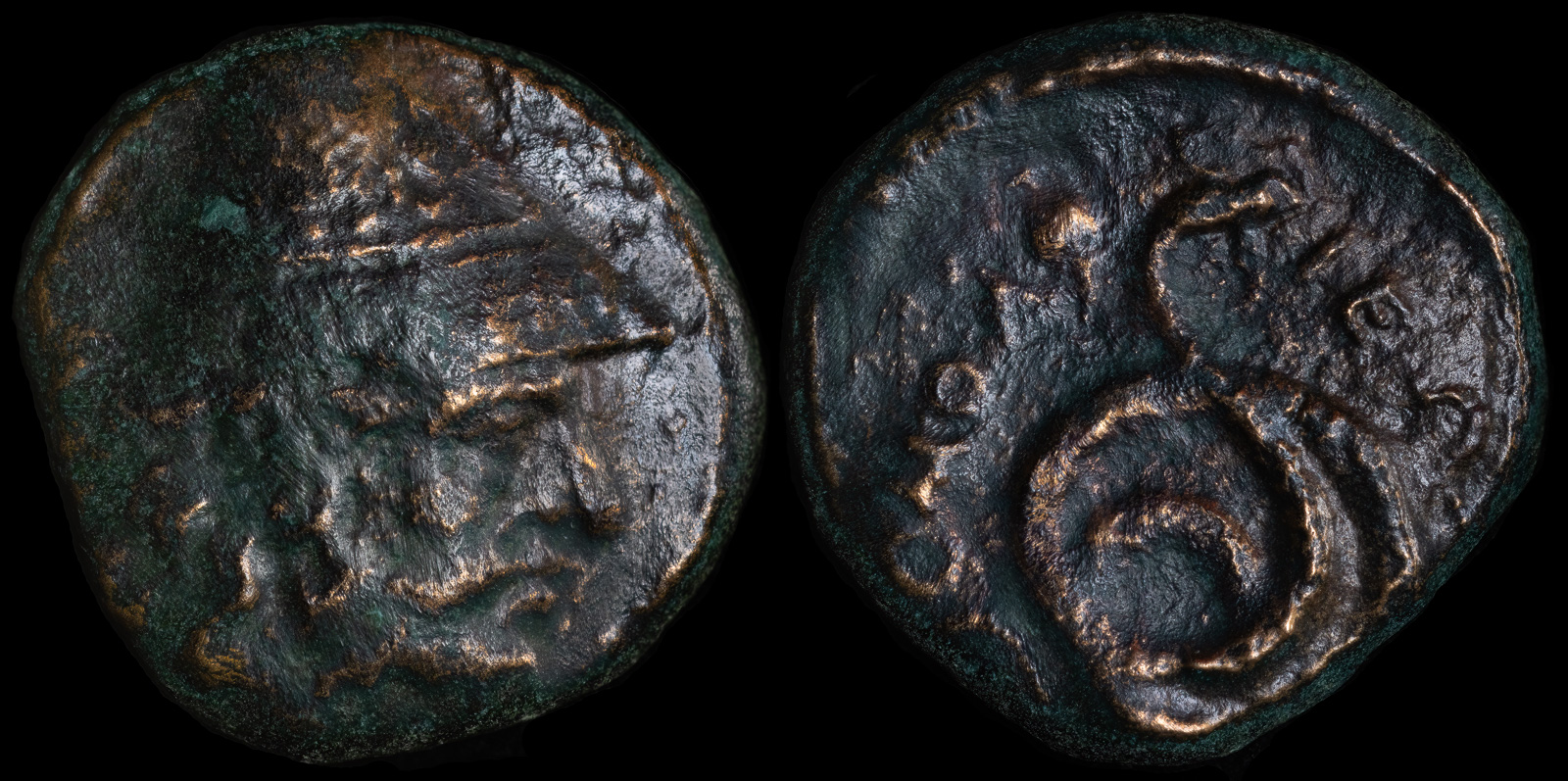
Thessaly, Homolion
ca 350 BCE
AE 20mm 6.6g
Head of Philoktetes right, wearing conical pileos /
ΟΜΟΛ-IEΩN; serpent coiled right, grape bunch above.
Helly, Quelques 25; Rogers 257; Bromley 2024 H37 (this coin)
Homolion was named for Mount Homole, which was reputed to be a favorite place for Pan and the home to many centaurs. The city itself was built to guard the Valley of Tempe and was richest during the 4th century BCE, when it minted these coins.
The obverse of the coin depicts Philoktetes, who was a Greek hero and participant in the Trojan War. Four Greek plays were written about him, though only one (by Sophokles) survives.
When Herakles died after wearing the poisoned shirt of Nessos, only Philoktetes would light the funeral pyre. In gratitude, Herakles gifted him his bow and arrows.
On the way to Troy, Philoktetes was stranded on Lemnos. One story was he was bitten by a snake sent by Hera to punish him for helping Herakles. There are other stories, but I wonder if the minter of this coin believed this one, since the reverse depicts a coiled serpent. Another story has Philoktetes bitten after a snake during a sacrifice to Apollo after Achilles killed the local king, who was a favorite of the gods.
Philoktetes remained alone on Lemnos for ten years. Evidently the other Greeks were fine leaving him there, until they learned that one precondition for taking Troy was the bow and arrows of Herakles. Several then travelled back to Lemnos to retrieve them.
Odysseus first snuck the bow away, but when others insisted they also bring back Philoktetes, they convinced him to accompany them by promising to heal him by one of the sons of Asklepios. This they accomplished in Troy. Philoktetes later joined the other Greeks in the Trojan Horse and in some accounts killed Paris.
It’s unsure why exactly the Homolions depicted Philoktetes on their coinage. He did briefly return to Thessaly after the war, so it’s presumed they believed he founded their city.